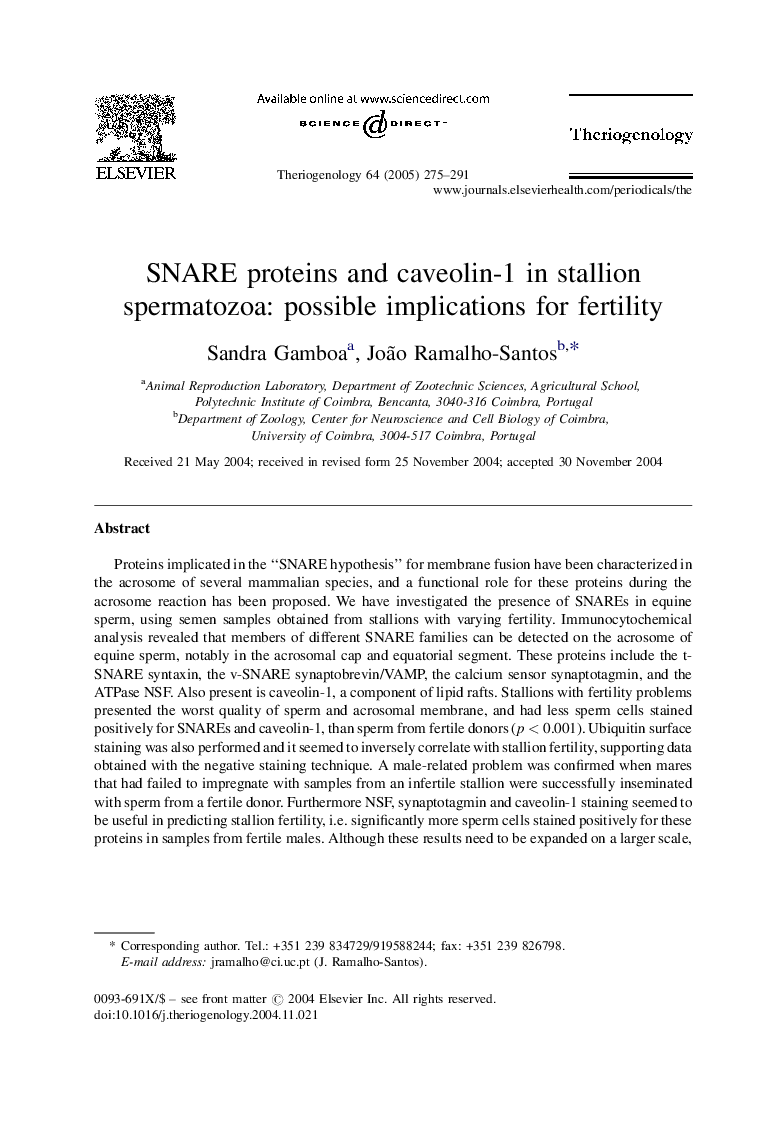| Article ID | Journal | Published Year | Pages | File Type |
|---|---|---|---|---|
| 10894569 | Theriogenology | 2005 | 17 Pages |
Abstract
Proteins implicated in the “SNARE hypothesis” for membrane fusion have been characterized in the acrosome of several mammalian species, and a functional role for these proteins during the acrosome reaction has been proposed. We have investigated the presence of SNAREs in equine sperm, using semen samples obtained from stallions with varying fertility. Immunocytochemical analysis revealed that members of different SNARE families can be detected on the acrosome of equine sperm, notably in the acrosomal cap and equatorial segment. These proteins include the t-SNARE syntaxin, the v-SNARE synaptobrevin/VAMP, the calcium sensor synaptotagmin, and the ATPase NSF. Also present is caveolin-1, a component of lipid rafts. Stallions with fertility problems presented the worst quality of sperm and acrosomal membrane, and had less sperm cells stained positively for SNAREs and caveolin-1, than sperm from fertile donors (p < 0.001). Ubiquitin surface staining was also performed and it seemed to inversely correlate with stallion fertility, supporting data obtained with the negative staining technique. A male-related problem was confirmed when mares that had failed to impregnate with samples from an infertile stallion were successfully inseminated with sperm from a fertile donor. Furthermore NSF, synaptotagmin and caveolin-1 staining seemed to be useful in predicting stallion fertility, i.e. significantly more sperm cells stained positively for these proteins in samples from fertile males. Although these results need to be expanded on a larger scale, they suggest that acrosomal and surface staining of equine sperm with novel probes may constitute useful tools in predicting stallion fertility.
Related Topics
Life Sciences
Agricultural and Biological Sciences
Animal Science and Zoology
Authors
Sandra Gamboa, João Ramalho-Santos,
